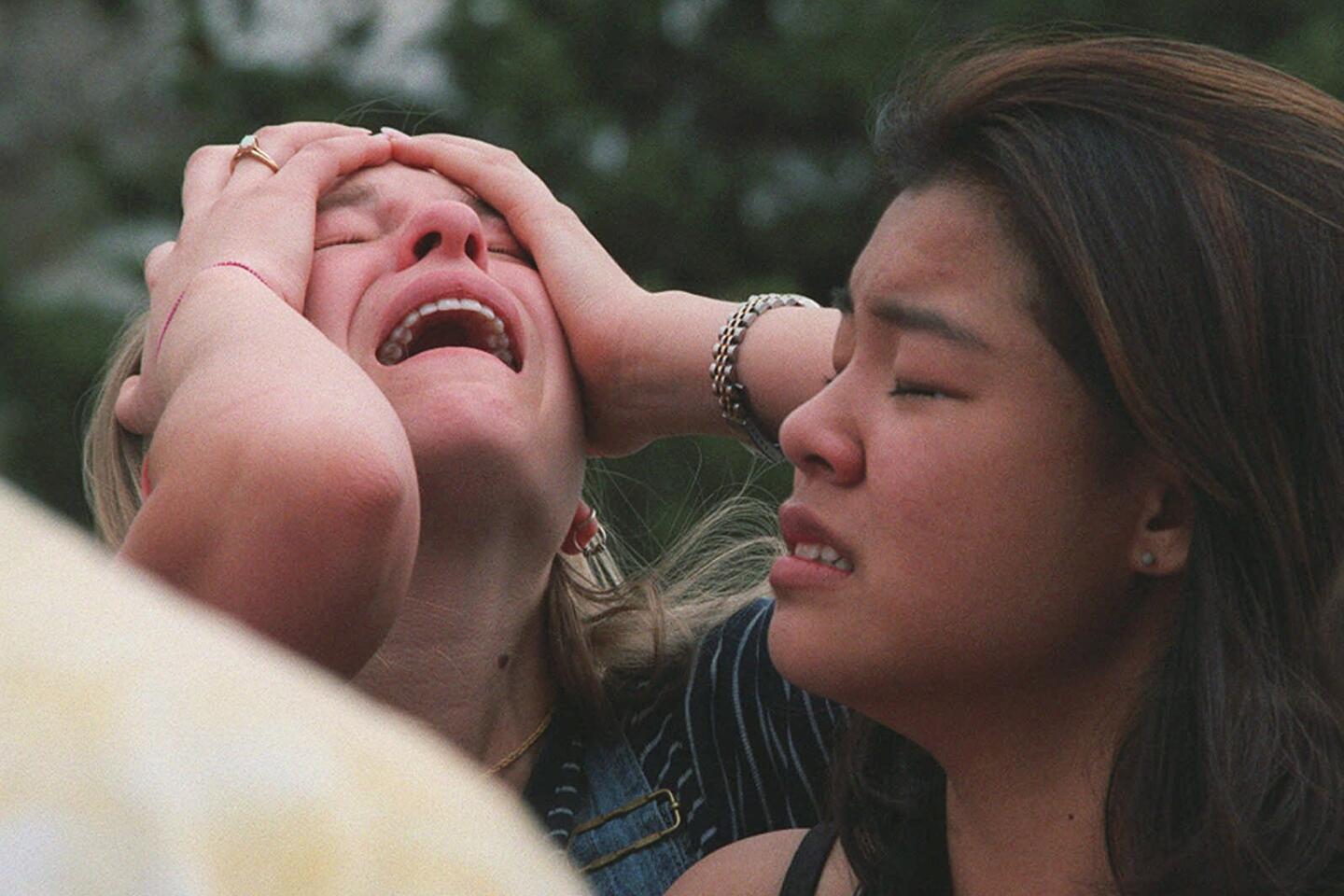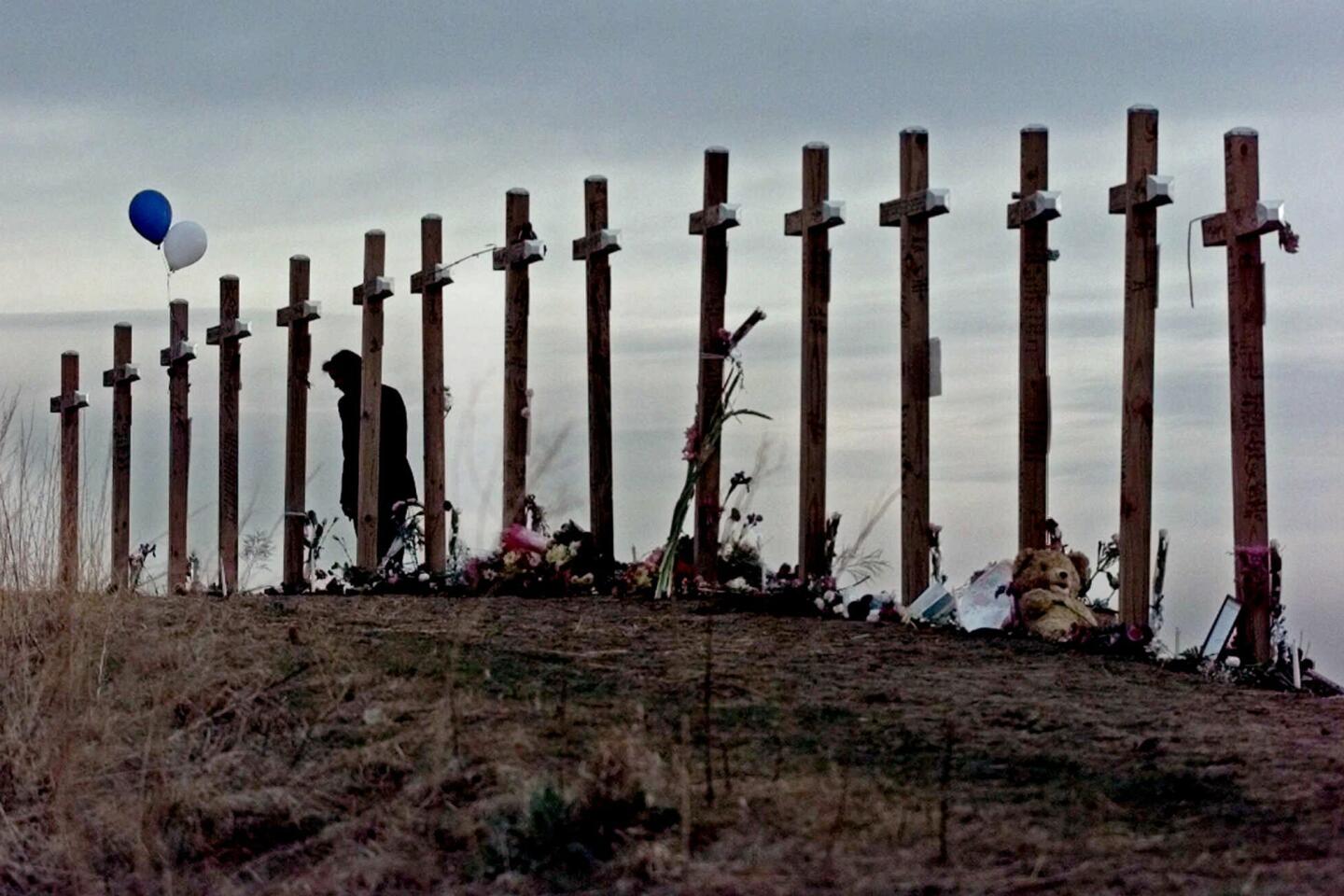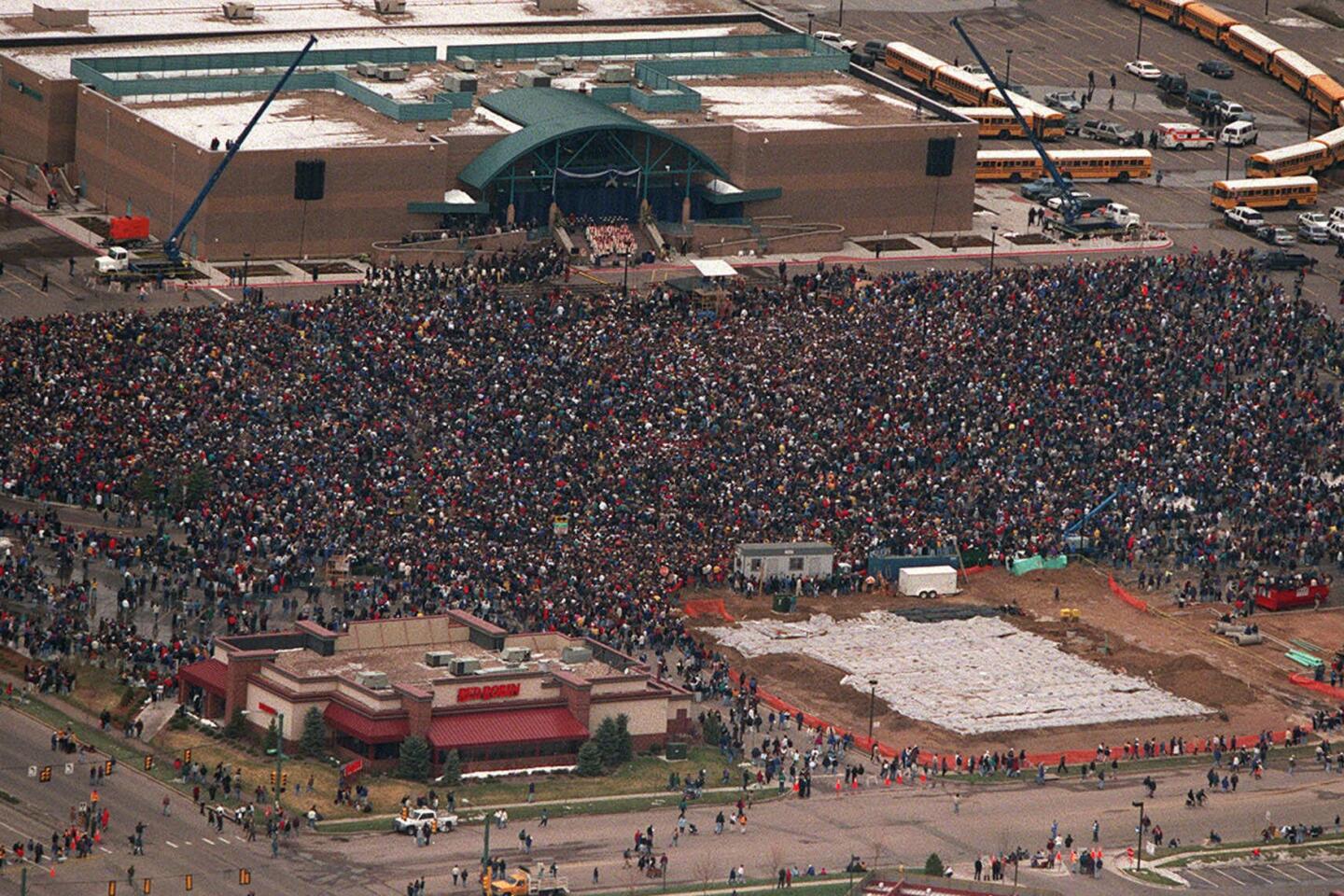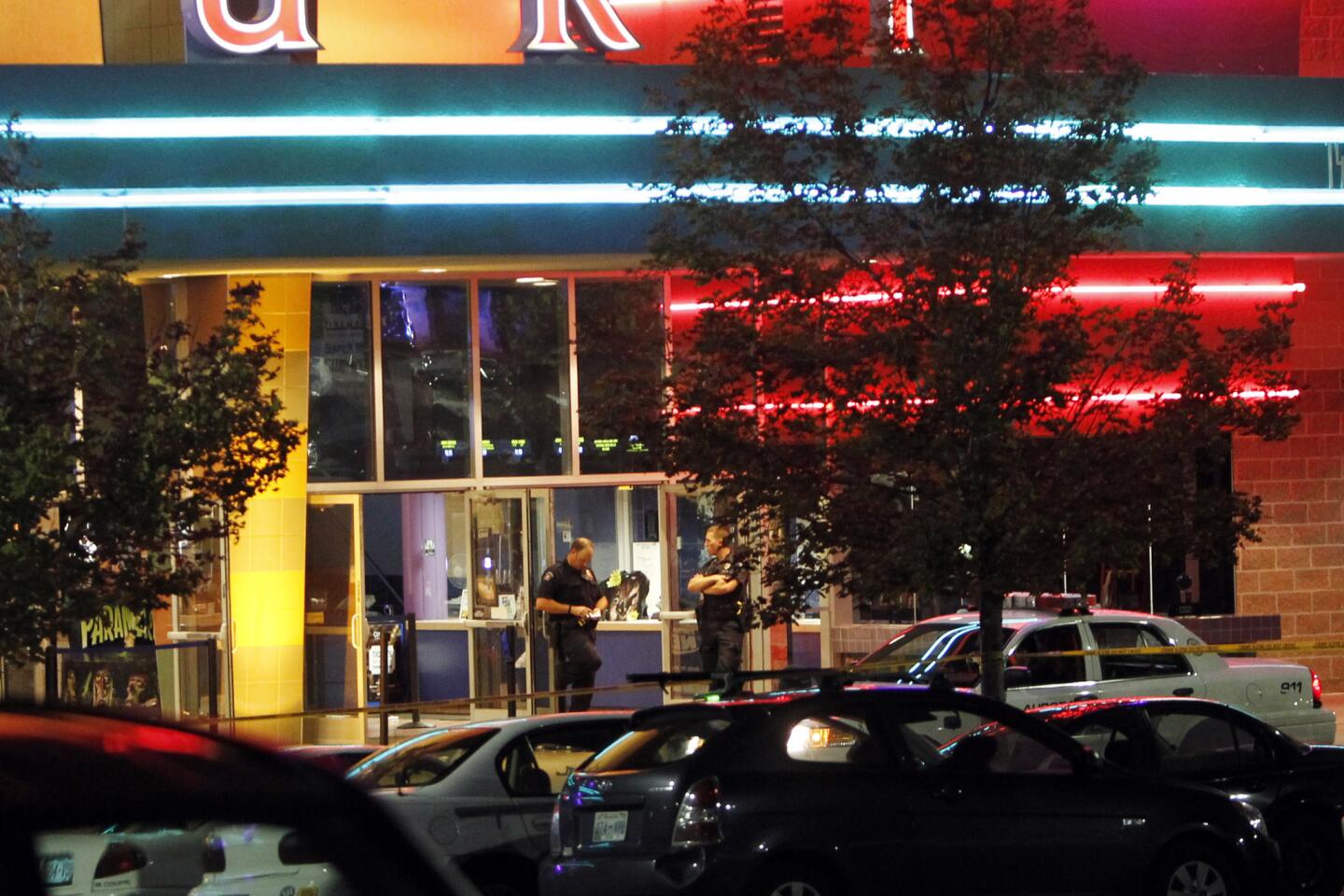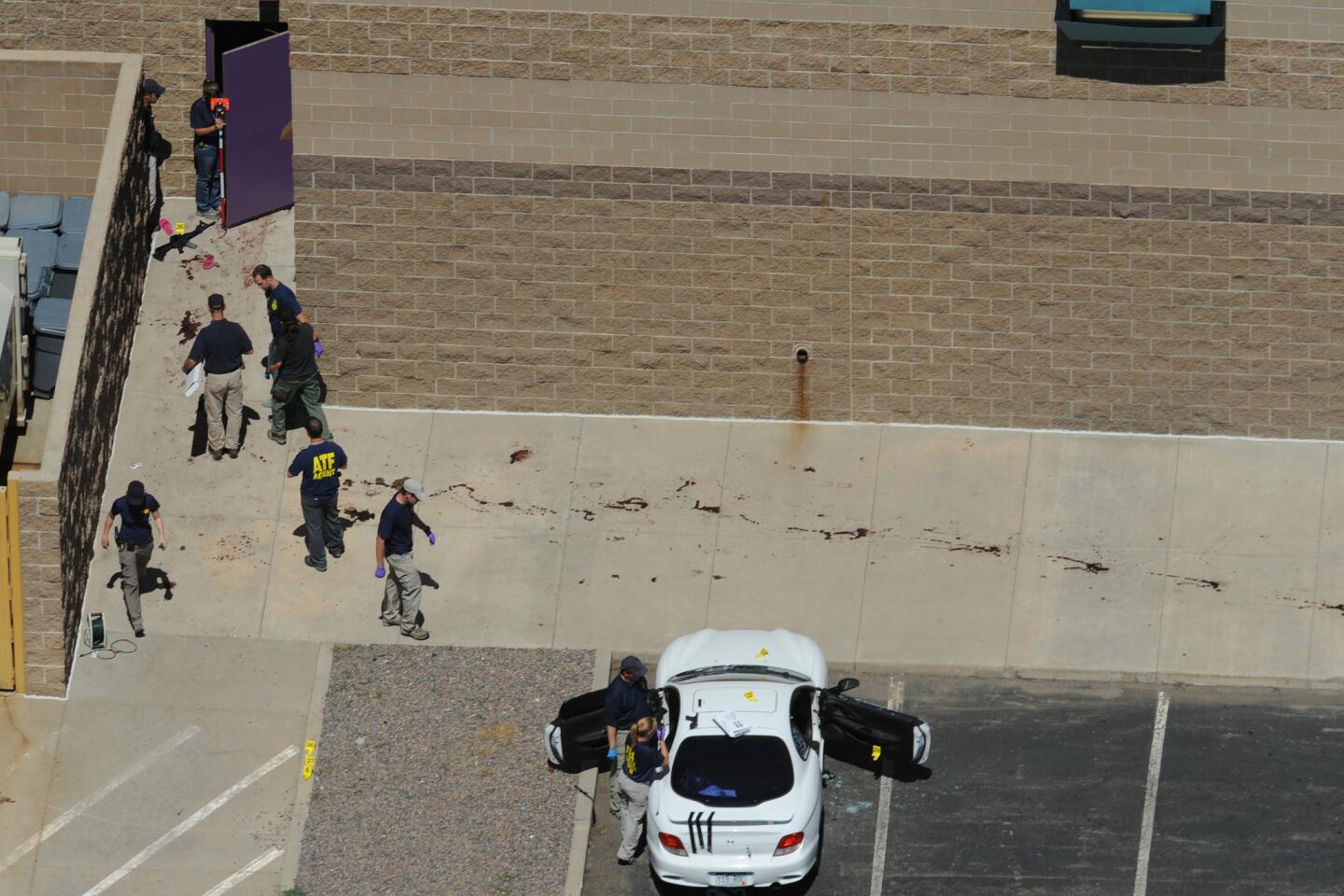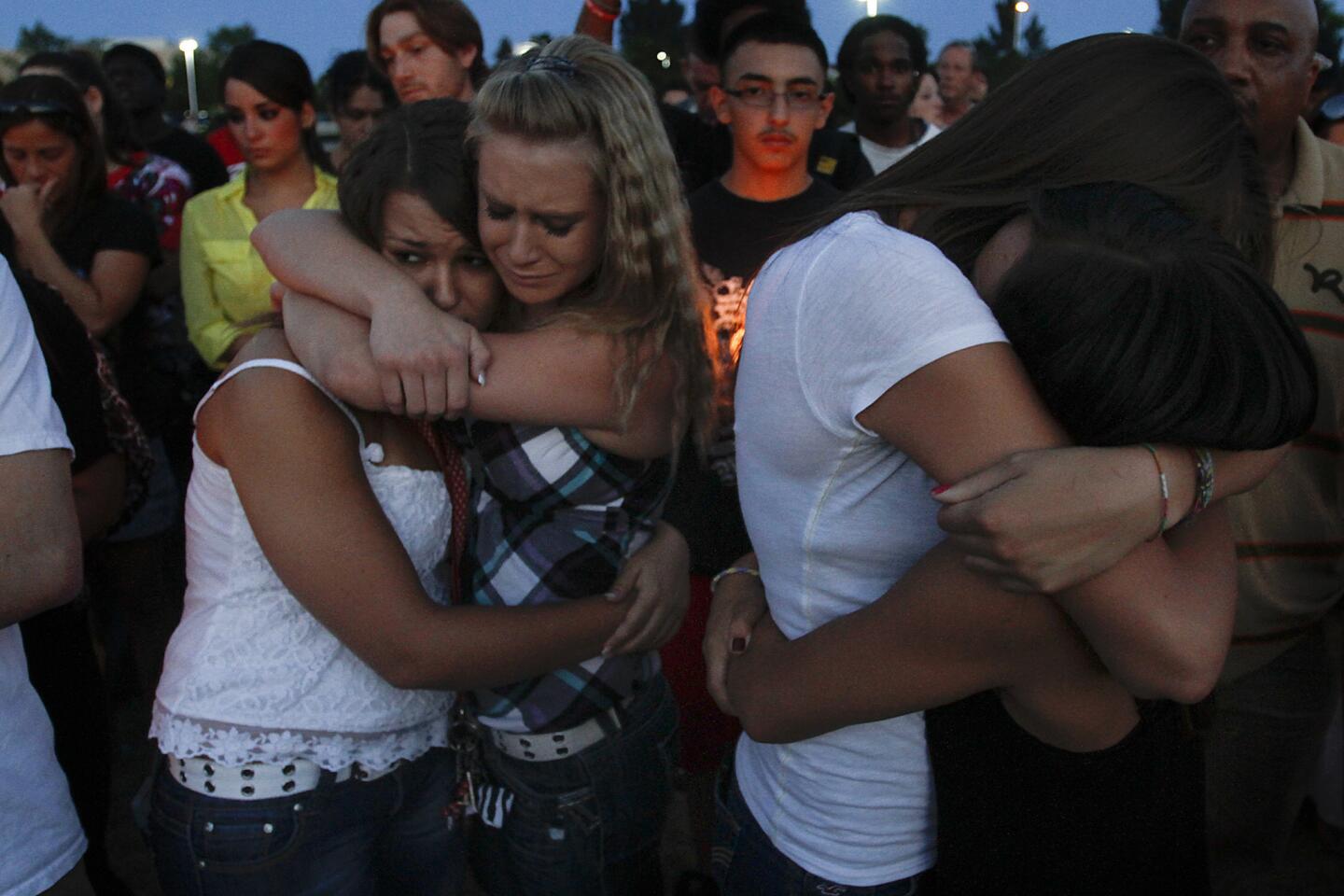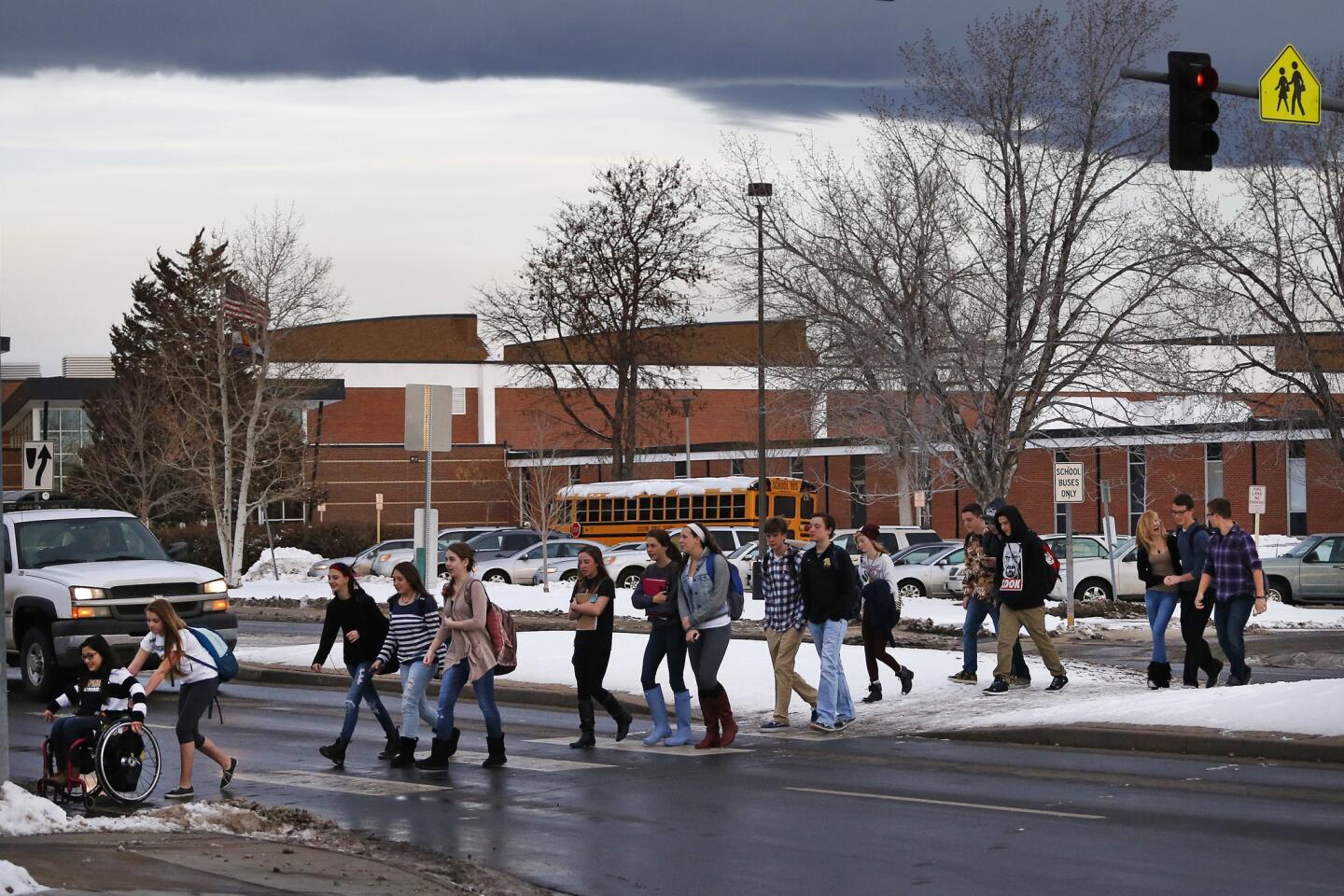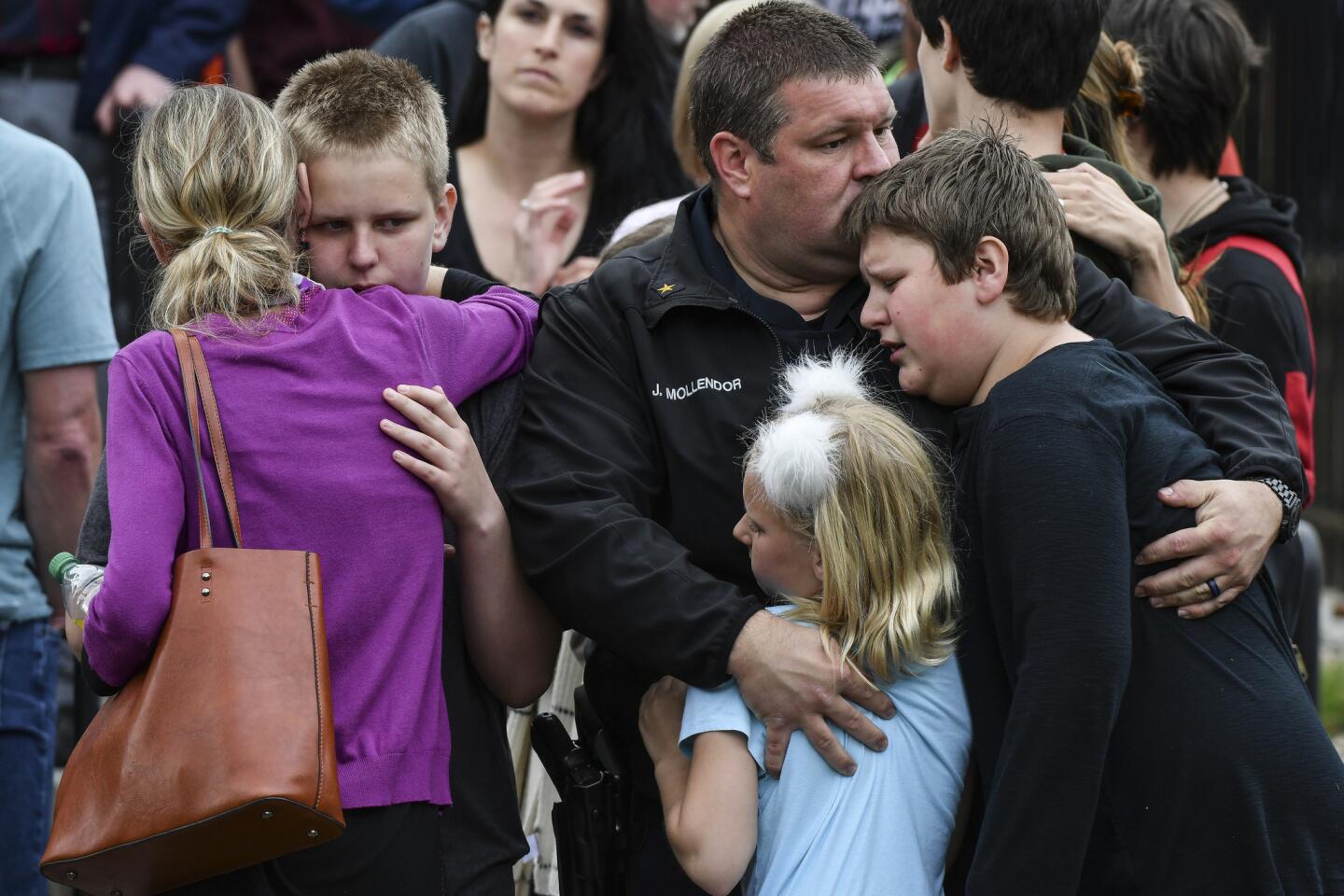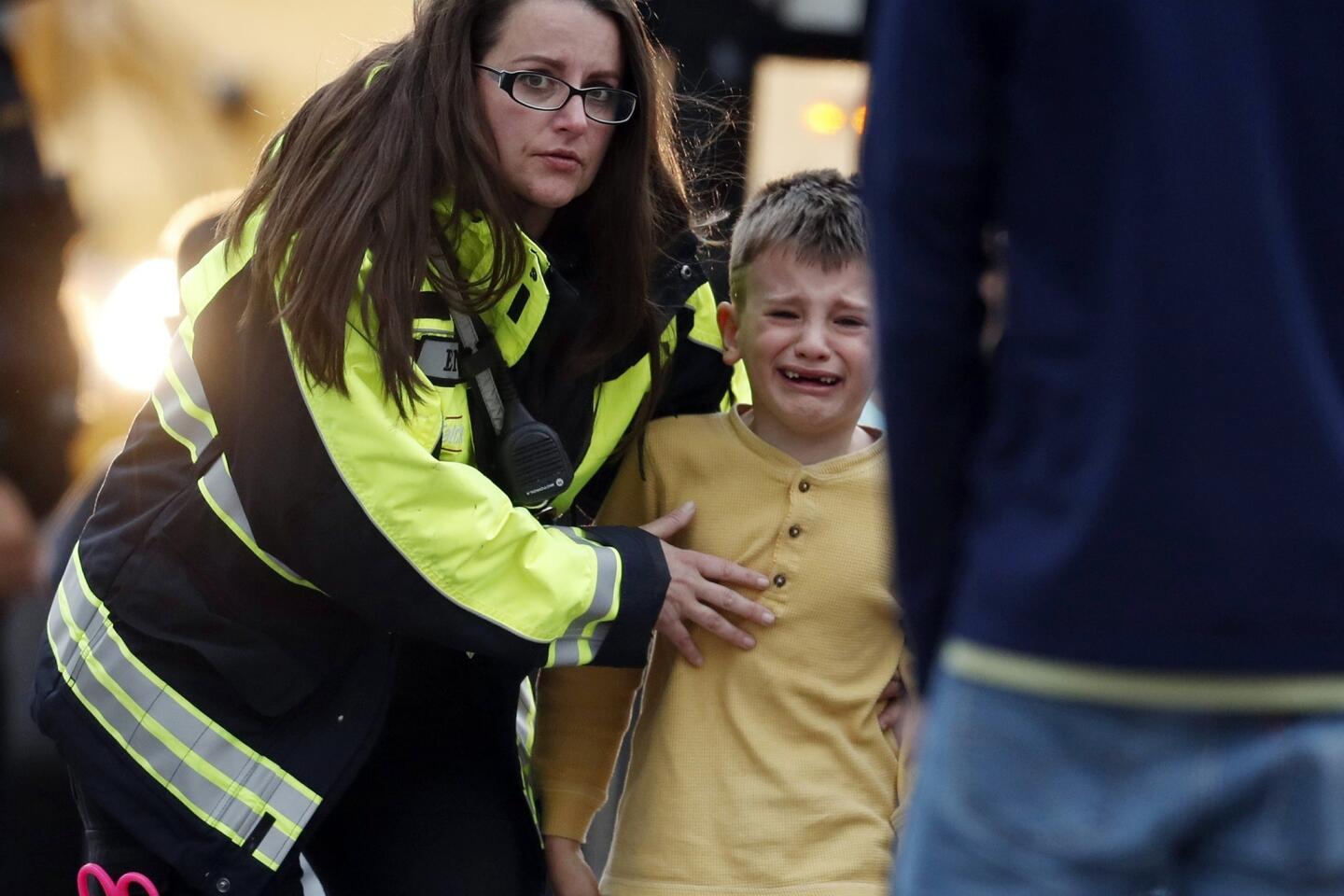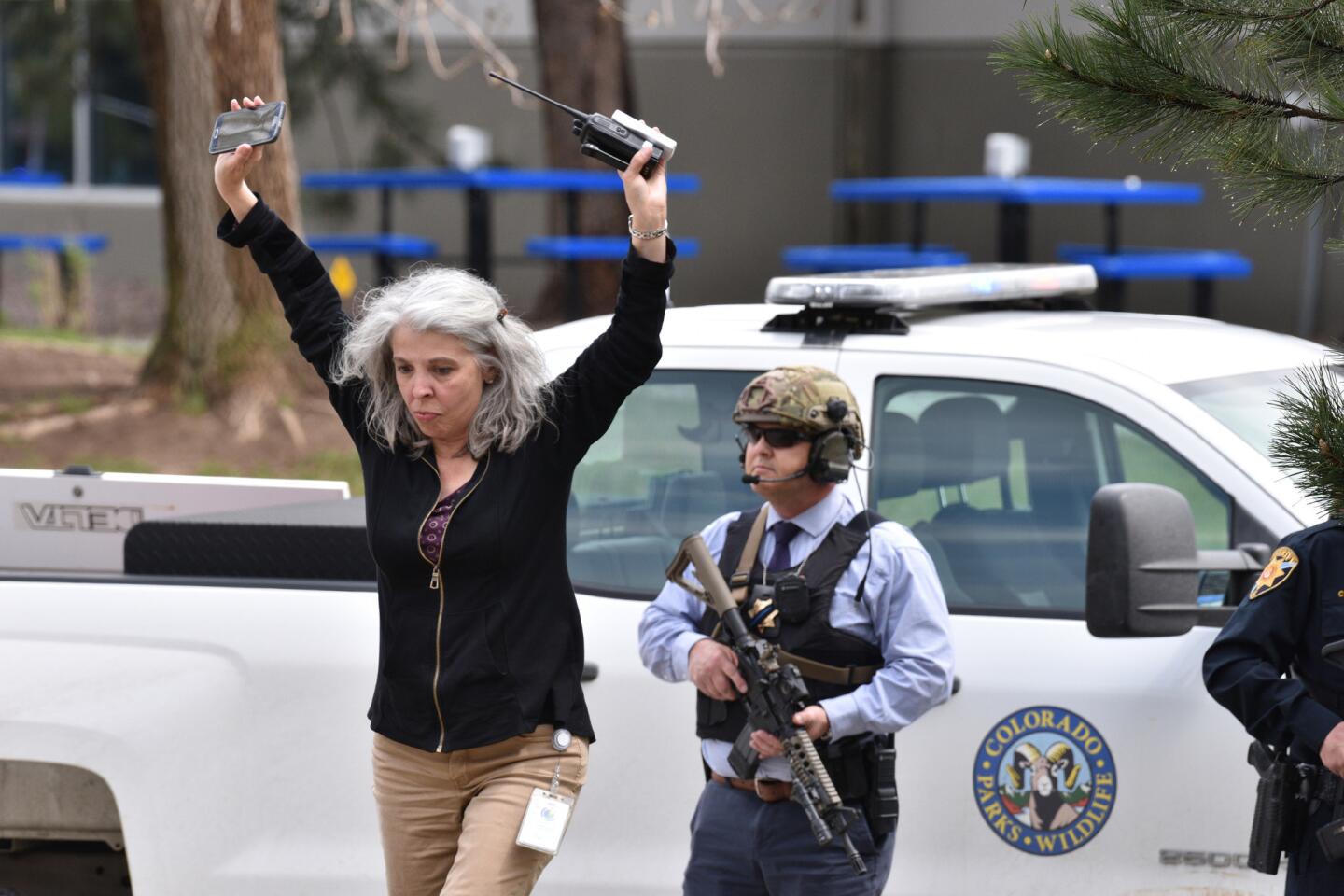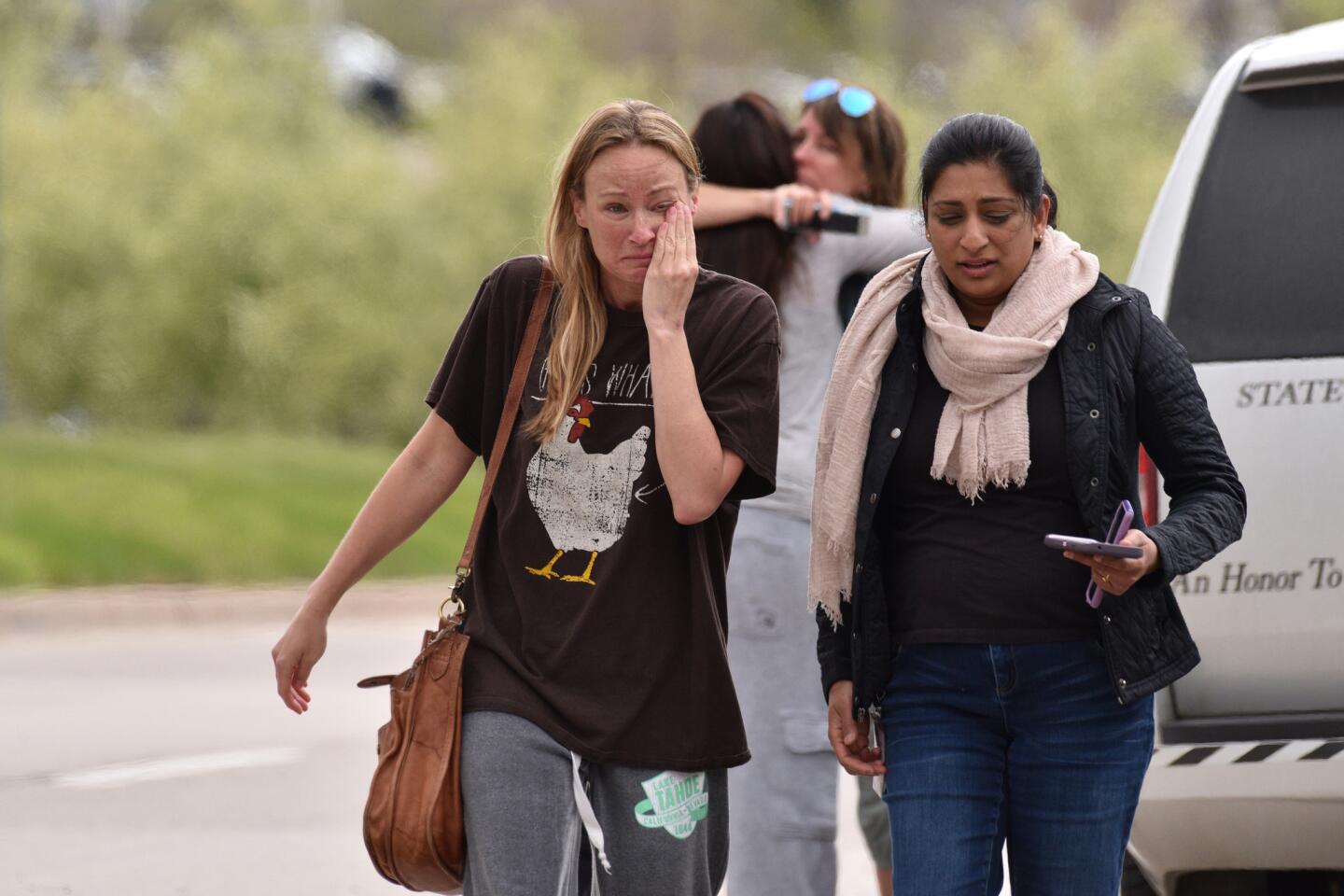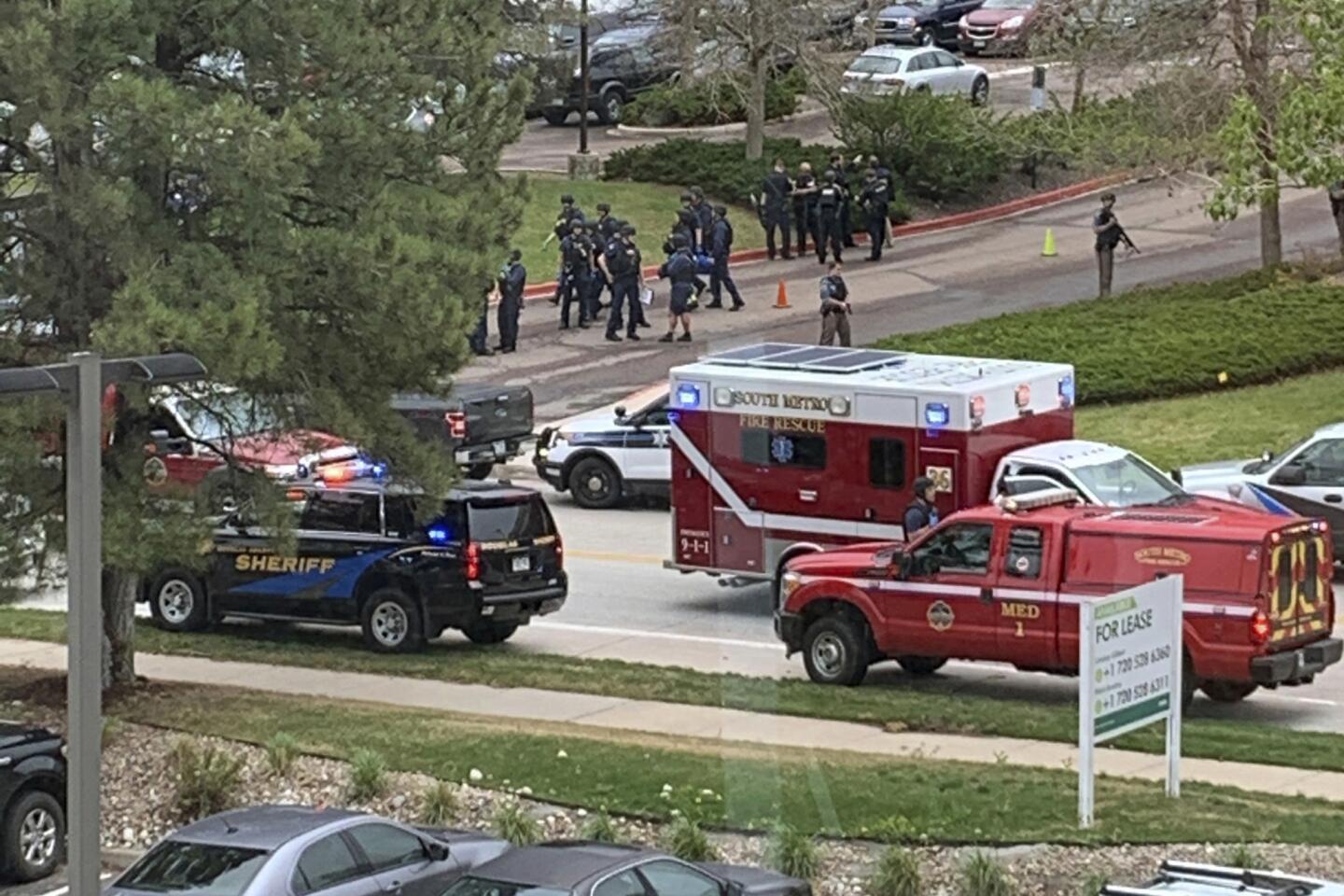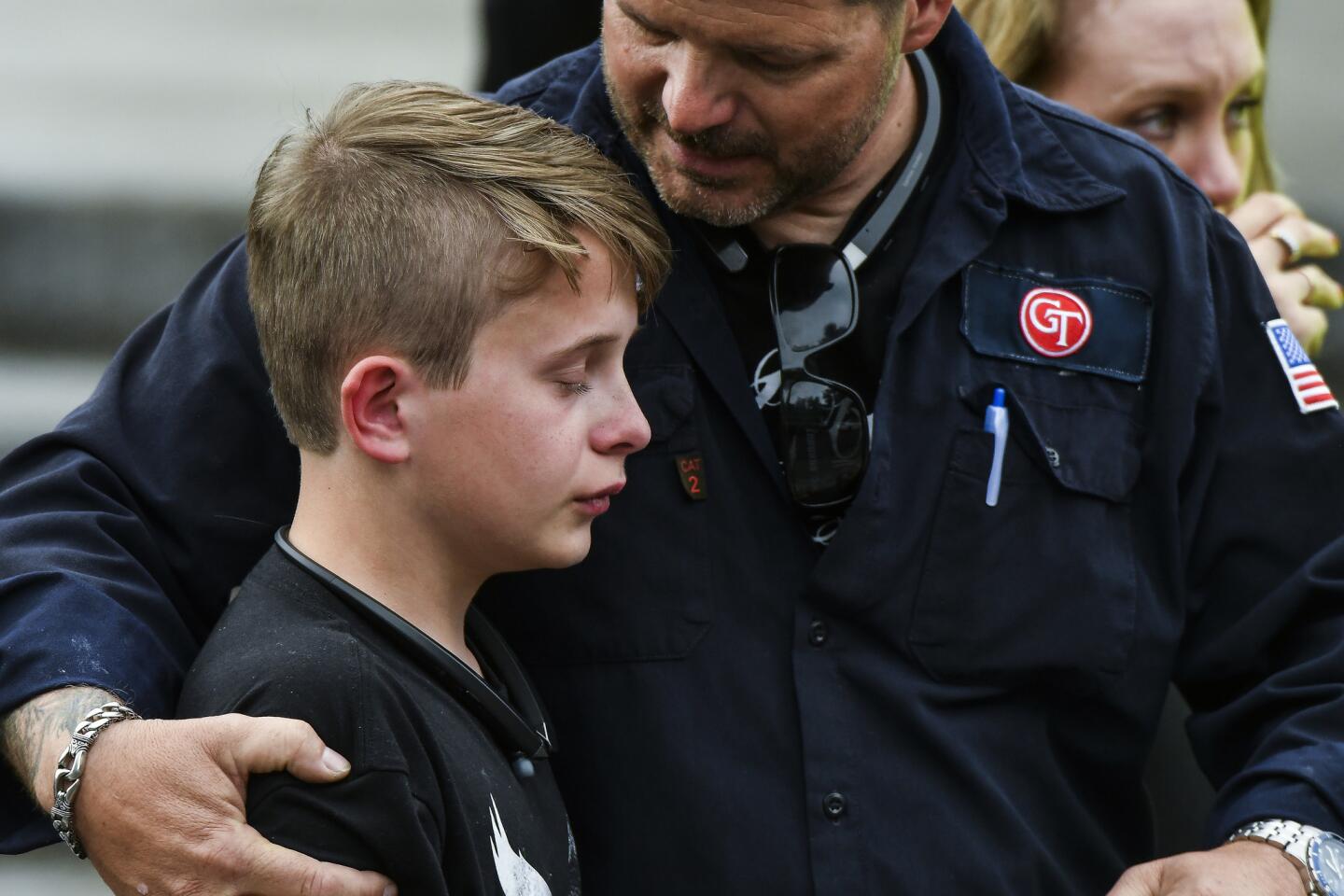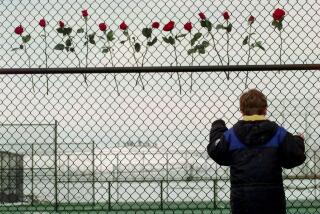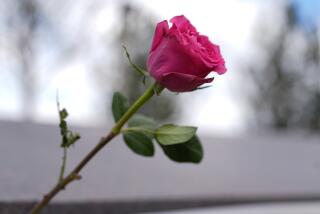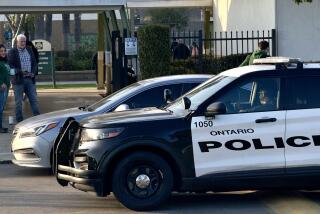From Columbine to Aurora, the Denver area is often plagued by gun violence
Students sprinting out of classrooms with hands clasped behind their heads. SWAT teams gripping rifles in the shadow of yellow school buses. Moviegoers slumped on the sidewalk, with popcorn strewn at their feet.
These images are seared into the collective memory of the Denver metro area — home to some of the worst mass shootings in modern history. This week, gun violence again devastated the region.
On Wednesday, a day after two attackers opened fire at the STEM School Highlands Ranch, killing one student and wounding eight others, the community here in Denver’s south suburbs was left reeling. The student killed, 18-year-old Kendrick Ray Castillo, was reported to have lunged at one of the shooters, who police said were students as well. Law enforcement officials said the suspects had a “number of weapons,” including two handguns, which they were not old enough to buy or own. In Colorado, you must be 21 to purchase a handgun.
Colorado Gov. Jared Polis said residents are heartbroken and frustrated by the violence at the school 8 miles from Columbine High School.
“Schools should really be places where students can learn and grow. Safe places,” Polis, a Democrat, said at a news conference. “They shouldn’t have to worry about being marched out or being airlifted to hospitals or even losing one’s life.”
The shooting at STEM, a public charter school with more than 1,800 students from kindergarten through 12th grade, is the latest in a string of mass shootings in the suburbs of Denver, which motivated the state Legislature to pass some of the strictest gun laws in the country.
In 1999, two students tore through Columbine High with guns, killing a teacher and 12 students. Last month marked the 20th anniversary of the massacre.
Ahead of the anniversary, hundreds of metro-area schools, including those here in Highlands Ranch, were closed for a day while law enforcement searched for an 18-year-old Florida woman who made what officials deemed credible threats against nearby schools. Officials believed the woman, Sol Pais, was “infatuated” with the shooting at Columbine and had traveled to the state for a “pilgrimage.” Authorities said she purchased a shotgun in the area and died of a self-inflicted gunshot wound near the base of Mt. Evans, along Colorado’s Front Range.
Six years ago, less than 4 miles from the STEM school, an 18-year-old walked into Arapahoe High School armed with a shotgun and machete. He killed one student before turning the gun on himself.
In July 2012, about 20 miles to the northeast, a gunman entered a side exit of a crowded Aurora, Colo., movie theater and began shooting. He killed 12 people and injured dozens at a premiere of “The Dark Knight Rises.”
State Rep. Tom Sullivan, a Democrat who represents portions of Aurora and whose son, Alex, was killed in the movie theater shooting, said Wednesday that there is an epidemic of gun violence plaguing America and, especially, the Denver area.
“No one tries to work out differences. … This is the approach that they take,” Sullivan said. “We’re not any more angry or traumatized than anyone else in this world. We just have easier access to firearms and are better at killing people than anyone else.… It’s sick.”
Over the summer Sullivan said he plans to host town halls twice a month focused on gun violence.
“We’re asking a simple question: Are you OK with what’s going on?” Sullivan said, noting that he wants to see stronger laws on storing weapons in homes and keeping firearms out of the hands of children. “We need to do better.”
Still, since the 2012 Aurora shooting, Colorado has enacted some of the strictest gun laws in the country, including universal background checks and limits on ammunition magazines. This year, Colorado joined several states in passing a “red flag” gun law that allows a family member or law enforcement to petition a court to temporarily remove someone’s firearms for up to a year.
On Wednesday, a steady rain fell in Highlands Ranch as the STEM school was surrounded by yellow crime scene tape while investigators continued combing it for clues about the shooting. For parents, the shooting prompted discussions about safety.
“I was looking into buying a bulletproof backpack for my son,” said Ania Kroczak, 33, moments after reluctantly dropping off her 9-year-old son at Cougar Run Elementary School in Highlands Ranch.
Kroczak spoke for many parents when she expressed frustration at how to answer a basic question from her child: “Is it safe to go to school?”
“I don’t feel I can tell my son that it’s safe,” she said. “When I heard about the shooting, I was just petrified. My stomach is in a knot.”
Holly Allen, 48, a Highlands Ranch mother, took her twin 10-year-old boys to a Starbucks on Wednesday morning to talk about what happened.
Both boys were worried about going to school, especially since it is so close to the site of the shooting.
“We are going into school late this morning because the boys had questions,” she said. “I told them that this is life and we can’t be scared.”
Allen was impressed with the rapid response of law enforcement — two minutes — a marked difference from 20 years ago when it took hours to go into Columbine.
“They did everything they had to do,” she said.
Even so, one of her sons didn’t look convinced.
“I still feel a little nervous,” he said.
Lee reported from Los Angeles and special correspondent Kelly from Highlands Ranch.
More to Read
Start your day right
Sign up for Essential California for news, features and recommendations from the L.A. Times and beyond in your inbox six days a week.
You may occasionally receive promotional content from the Los Angeles Times.
